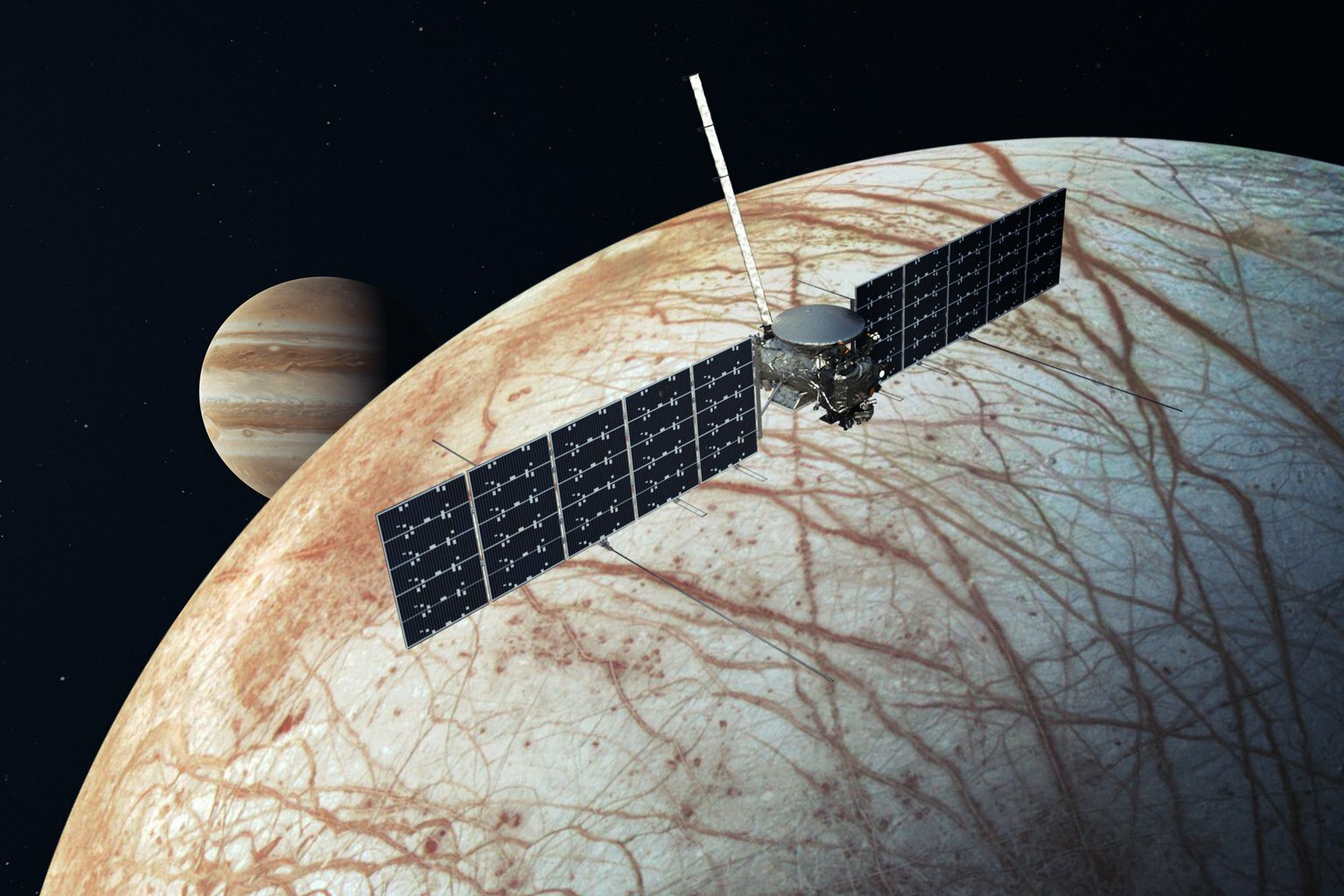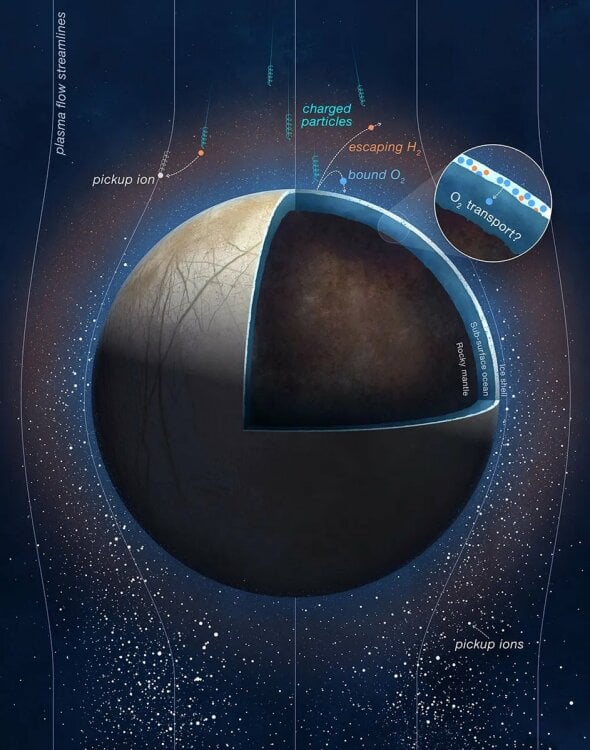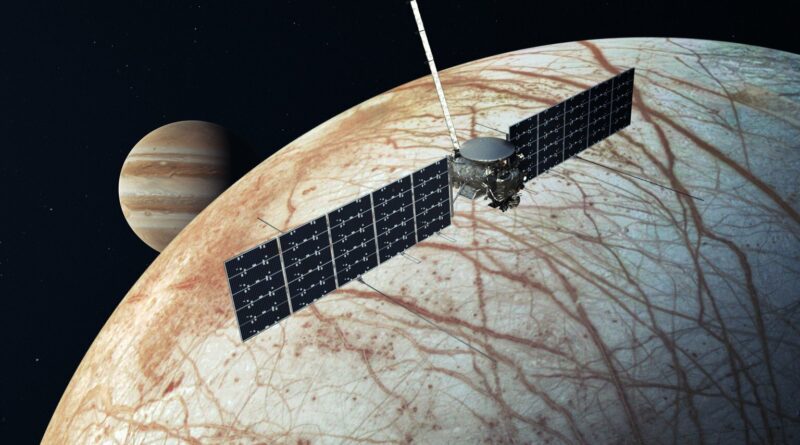NASA finds captivating ocean world is making oxygen. Here’s how much.

NASA suspects that the ice-clad moon Europa harbors a deep, deep sea — reaching some 40 to 100 miles (60 to 150 kilometers) down.
And new evidence, from the space agency’s Juno craft, points to surface processes that create bounties of oxygen on Europa, some of which is transported into the world’s voluminous ocean. It’s not as much oxygen as some research has previously suggested, but it’s nothing to sneeze at:
“The ice-covered Jovian moon generates 1,000 tons of oxygen every 24 hours – enough to keep a million humans breathing for a day,” NASA said in a statement.
Europa, an orb just a little smaller than our moon, orbits the gas giant Jupiter some 480 million miles beyond Earth. Crucially, Europa dwells in a region teeming with potent radiation produced by Jupiter’s magnetic field. As a result, energized particles (called “ions”) pummel Europa’s surface. In doing so, these particles split apart the moon’s surface water molecules, resulting in hydrogen and oxygen.
“Europa is like an ice ball slowly losing its water in a flowing stream,” Jamey Szalay, a scientist from Princeton University who led the new research, published in the science journal Nature Astronomy, explained in the statement. “Except, in this case, the stream is a fluid of ionized particles swept around Jupiter by its extraordinary magnetic field.” Szalay works on one of the Juno spacecraft’s instruments, the Jovian Auroral Distributions Experiment, or JADE.
When the Juno spacecraft swooped just 220 miles from Europa in September 2022, the JADE instrument successfully observed both the oxygen and hydrogen spawned by the particles bombarding the moon. The measurements indicate this activity makes 26 pounds (12 kilograms) of oxygen every second.
“Scientists believe that some of the oxygen produced in this manner could work its way into the moon’s subsurface ocean as a possible source of metabolic energy,” NASA explained.

Life thrives in Earth’s salty oceans. There’s certainly no evidence of life on Europa, but it could harbor environments that host life (as we know it). In other words, this moon could be a “habitable” world in space.
“It’s one of few places that potentially has the conditions for habitability.”
“It’s one of few places that potentially has the conditions for habitability,” Scott Bolton, the Juno mission’s principal investigator, told Mashable in 2022.
NASA is so intrigued by this icy moon, it will soon launch a dedicated probe there in October 2024. The spacecraft, called Europa Clipper, is the length of a basketball court and designed to make around 50 flybys of the distant Jovian world, assessing whether it could harbor conditions suitable for life. It will arrive in 2030.

